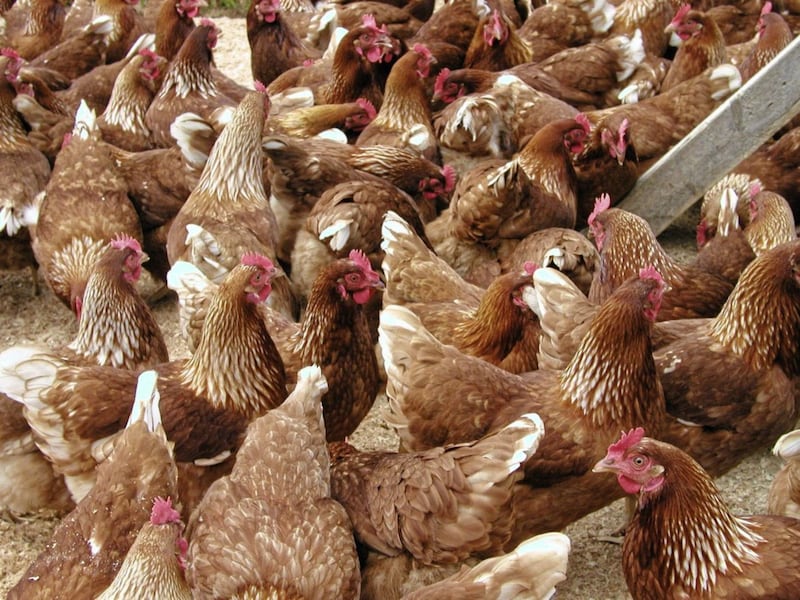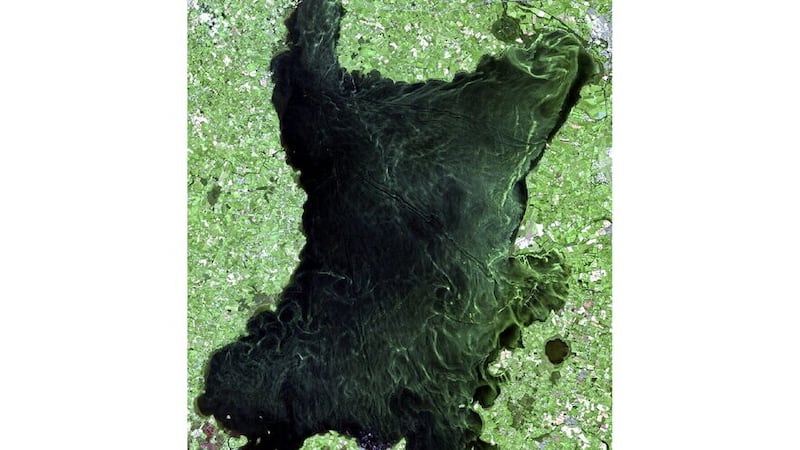Environmentalists have reacted to claims there is no evidence of any connection between government policy to boost agri-business and the crisis around Lough Neagh and other waterways.
Government officials, in a briefing, said there was no evidence of a connection between the toxic bacteria blooms in Lough Neagh, the River Bann and elsewhere and the Going for Growth strategy, introduced in 2013 but which ramped up from 2015.
A connection between Stormont-encouraged growth in industrial farming, including the mass production of pigs and poultry, and the pollution in the north’s waters is clear, according to James Orr, director of Friends of the Earth in the north.

Sinn Féin vice-president Michelle O’Neill was agriculture minister at the time the strategy was developed in 2013 and in its first years of implementation. She was followed by the DUP’s Michelle McIlveen and, following the 2020 restoration of the Executive, by Edwin Poots.
In a statement, Sinn Féin did not directly address the Going for Growth strategy but said urgent action is needed to deal with the issue of blue green algae in Lough Neagh.
The party cited a range of factors contributing to the toxic bacteria on the lough and elsewhere, including climate change, increased water temperature, and the spread of invasive Zebra Mussels "as well as more localised factors including an increase in nutrient run-off into the water".
"And Lough Neagh should be brought under public ownership so that a clear management structure can be developed and long-term plans developed to keep the lough safe and sustainable for future generations," a spokesperson said.
The Irish News contacted all three politicians for comment. The Department of Agriculture, Environment and Rural Affairs (DAERA) has also been contacted for further comment.
Read more:
- Officials: Toxic bacteria in Lough Neagh is worst ever recorded
- Sludge-like toxic algae could wash up on any shore on Lough Neagh, agriculture officials warn
“What is really interesting is that Going for Growth has actually met its targets, remarkable in a dysfunctional country that cannot deliver anything,” said Mr Orr.
“This was not just deregulation, it was financially subsidising."
According to DAERA, approximately two-thirds of the nutrients feeding the toxic bacteria, or blue-green algae, comes from agricultural run-off. Approximately 25 per cent comes from waste water and 12 per cent from septic tanks.

A census of poultry revealed there were approximately 16 million chickens in 2010, rising to more than 21 million in 2022, again according to DAERA figures.
The majority of the poultry units approved since 2015 range from the 16,000 to 32,000 bird range. The number of pigs being farmed has also increased, from approximately 400,000 at the turn of the century to over 700,000, close to 15 per cent of the total UK population.
Over the same period, the number of pig farms has dropped from over 800 to approximately 150, suggesting a substantial increase in the number of large-scale operations.
Representatives of family-owned farms said it was time to "put clear blue water between them and the main polluters of Lough Neagh".
Farmers for Action said approximately 75 per cent of family farmers have no input into Lough Neagh, while spreading is limited to between March and October due to a 2006 EU directive.
Sean McAuley, of the FFA, said: "FFA acknowledges... that farmers along and connected to tributary rivers into Lough Neagh as far away as eg Monaghan also need to and will do everything in their power to eliminate leaching.
"Action is required immediately to save our lough by the major polluters, government and otherwise, not delays and more unnecessary scientific reports.
"In addition, Stormont needs to return asap and put into legislation the Northern Ireland Farm Welfare Bill which would see farmers properly paid for what they produce.
"This money in turn would be a massive help going forward to help eliminate remaining leaching or run-off of farm nutrients by embracing new technology further, alongside new techniques.”



